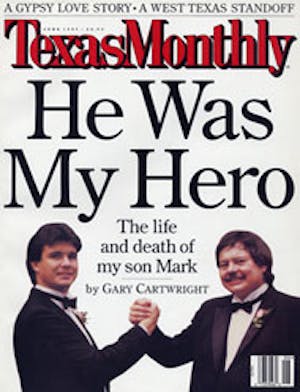ARGUABLY THE GREATEST ATHLETE of all time, she thoroughly dominated not one but two sports: first track and field, then golf. After the Port Arthur native won gold medals in the javelin and the eighty-meter hurdles at the 1932 Olympics in Los Angeles, the press labeled her an “amazing Amazon,” a “terrific tomboy,” the “Texas Tornado,” and a “muscle moll.” The last epithet slammed her distinct masculinity—a quality as talked about as her athletic prowess. Ever her own best promoter, she deliberately feminized her image when she switched to golf, then one of the few sports that not only was open to women but also offered longevity and remuneration. In a straitlaced era, she was both a misfit and a marvel.
She was born Mildred Ella Didriksen to Norwegian immigrants on June 26, 1911. She was nicknamed Babe as a child but later said the moniker sprang from her athletic affinity with Babe Ruth. (She also changed the e in her last name to an o.)
From 1930 to 1932 she set U.S. or world records in the eighty- meter hurdles, the broad jump, the high jump, the shot put, the javelin, and the baseball throw.
Crowds loved her skill and sass. Once, playing with a men’s baseball team known for its bearded members, Babe was heckled by a female fan who yelled: “Where are your whiskers?” She retorted, “I’m sittin’ on ’em, sister, just like you are.”
In 1935 a clique of wealthy Texas women objected to her participation in golf. Sniffed one: “We really don’t need any truck drivers’ daughters in our tournament.” Because Babe had accepted fees for a variety of professional sports exhibitions, the United States Golf Association banned her from amateur play for three years.
As a golfer, she regularly drove the ball 250 yards and once won thirteen tournaments in a row.
Her 1938 marriage to wrestler George Zaharias dispelled much speculation about her sexual orientation. But twelve years later she met Betty Dodd, an up-and-coming amateur golfer; Dodd soon moved in with them, and—although Zaharias continued as his wife’s manager—the two women remained inseparable until Babe’s death.
In 1952 Babe made a cameo appearance in the Katharine Hepburn–Spencer Tracy film Pat and Mike, based loosely on her life story.
She developed cancer in 1953, underwent a colostomy, and then won five tournaments the next year. The disease recurred, however, and in 1956 she died in Galveston at age 45.
- More About:
- Texas History
- Sports
- Golf
- Port Arthur







